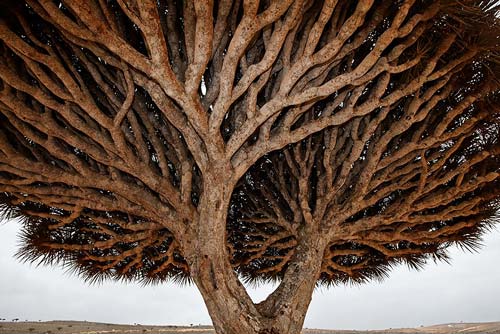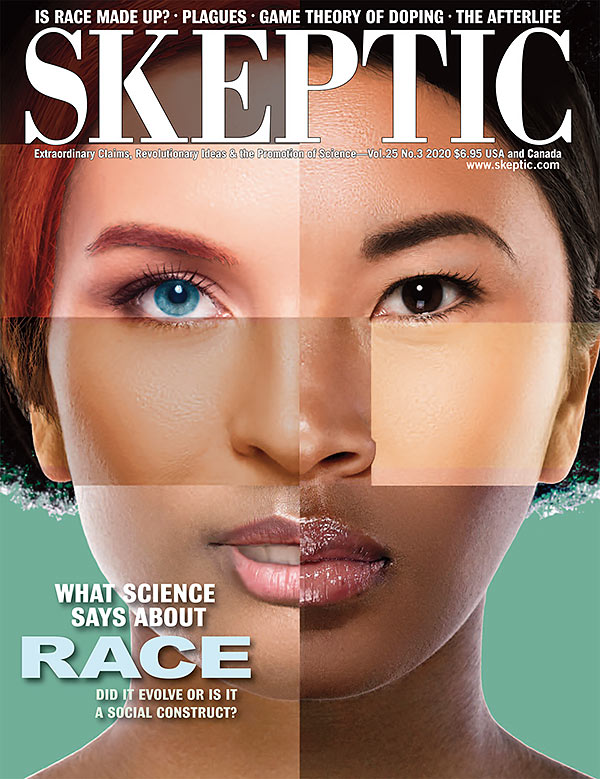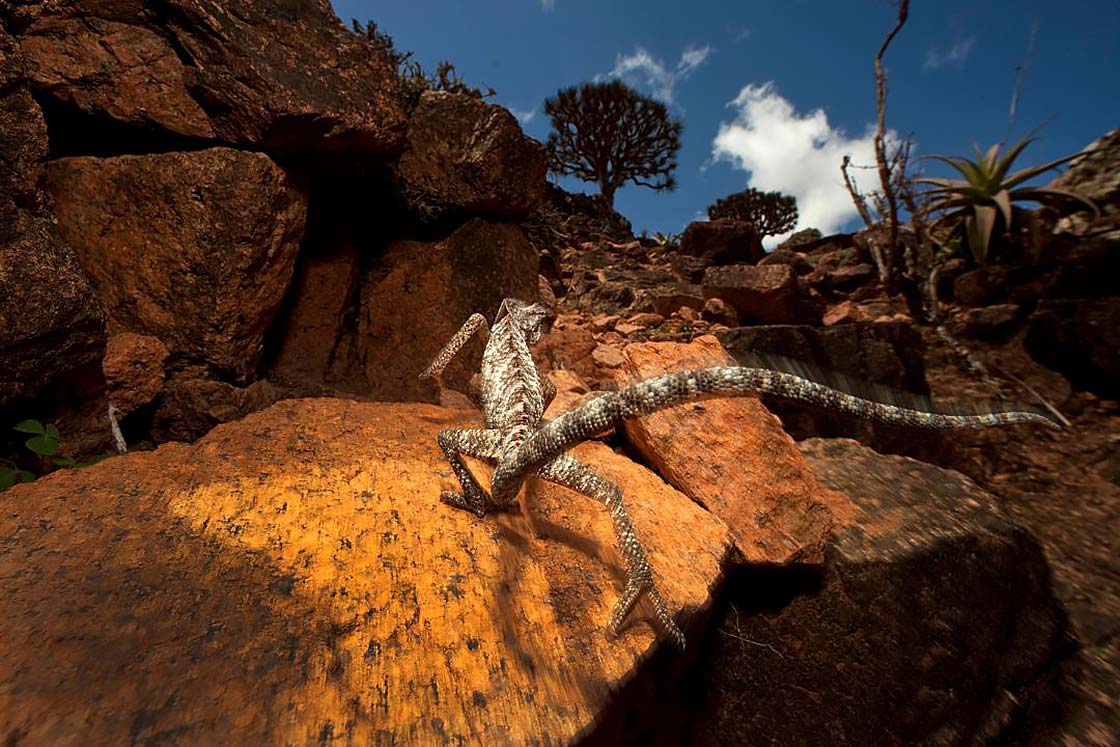I find it ironic to be weathering out Covid-19 in Brooklyn given that I’m a biologist who thinks of rainforest as my native habitat. Still, I feel fortunate to be a witness to what appears to be a global sea change: The air has grown clearer until the sky can turn a crystalline blue typical of mountain vistas. The squirrels and now superabundant birds — even one fearless raccoon — have stared at us through our 4th floor balcony window as if we were zoo animals. Already the stories are legend. Coyotes prowl San Francisco and mountain lions relax in downtown Boulder as if cities were their native habitat. Those who deny humanity’s footprint on nature point to the fact we can’t prove that people are the culprit behind climate change or species loss, but now it seems we’re actually doing the experiment. Can we turn our perceptions of nature around for good and put an end to the environmental crisis?
One way forward will be to recognize a fact of human psychology: Our abuse of nature is linked to the equally pressing concern of our age, social disintegration as a result of war, terrorism, and inequality. All are manifestations of a basic human drive to distinguish ingroups from outgroups. In this connection lies the key to deactivating the effects of both.
Kimberly Costello and Gordon Hodson, psychologists at Brock University, Ontario, Canada, had research participants read essays enumerating the humanlike traits of animals. Mere exposure to this perspective led even their subjects with the most entrenched prejudices to think more kindly not only of other species, but of immigrants — to regard them more as equals — despite the fact that the essays had mentioned nothing about humans.1
I registered what appeared to be such a link myself when I traveled to Socotra, remote chunks of land, the largest 50 miles across, 250 miles off Yemen’s shore. Whereas the only other archipelagos with comparable biological diversity, the Galapagos and Hawaii, have experienced terrible species loss since human contact, there’s no sign that Socotra’s goat herders have driven species to extinction despite occupying those islands since the time of Christ.2 Socotra has remained ecologically intact because of how tribal elders orchestrated the movements of people and goats to reduce habitat destruction. In Socotra, I was struck, always, by the spiritual connection between herder and goat. Herders, who knew their individual animals well, would cradle the animal to be slaughtered. They would caress it, sing to it. The goat’s sacrifice wasn’t taken lightly. To eat isn’t to be superior. As remarkable as the Socotran respect for animals and nature was their nonviolent behavior toward each other. While war devastates Yemen’s mainland, until very recently no weapons were permitted on the archipelago.
From an evolutionary standpoint, the link in attitudes toward animals and treatment of other people makes sense. In an age when both saber-toothed tiger and foreign clans represented constant threats, people responded by differentiating without hesitation between us and other. While that ingrained tendency to register a gulf from perceived outsiders was a survival tactic in their dangerous and little-understood world, it lies at the heart of dehumanization, and is the source of clashes, racial, ethnic, and nationalistic. The root of the dilemma is how the mind insidiously ranks people, with our own group at the top while others fall in a hierarchy that extends down to the abyssal strata where we position the most despised vermin.
By placing human groups and animals in one hierarchy, in essence we treat foreigners as if they were also different species: just as elephants have trunks and tusks, an ethnic or national group dresses and acts a certain way, and we expect their offspring to do the same (in a word, we see those groups as natural). Thus, our preconceptions about nature and prejudices about people turn out to be part and parcel of the same cognitive system, an equivalence that may have been useful to our ancestors.
Costello and Hodson’s studies indicate that when our innate assumption of superiority is counteracted, the possibility for more humane treatment of both fellow humans and nature increases. Mind you, our hierarchical mode of thinking is an anachronism we won’t be able to expunge; the perspective seems built into us, innate. Tests show that even young children equate members of outside groups with other species, and that they also see people generally as above animals. Still, in the connection between human prejudice and speciesism lies the key to deactivate the effects of both.
Comparisons that Denigrate
How can we overcome our denigration of certain peoples, and animals? We can start by imagining ourselves in the other’s place, to open our minds to other points of view and to respect the other’s identity.3 A commonsensical goal might seem to be to dissuade people from dwelling on their differences, which highlight inequities, and focus instead on similarities with disliked others. We assume clashes will fade if a conflict negotiator can prove to both parties that you are like them. But such attempts can backfire for a simple reason: both sides feel their uniqueness, a source of pride and self-worth, is being questioned. Finding their cherished identities under attack, each group typically grows more entrenched. Relations may get worse, not better.4
Even more so when people are asked to recognize similarities between themselves and an animal. This resemblance can’t apply to us, only they — the members of some inferior society or ethnic group — can possibly be like an animal.
Indeed, our tendency to compare outsiders to animals truly shows our contempt for both. Examples exist for any culture, as when Muslim prisoners at Abu Ghraib were posed for photographs as if they were beasts.5 In World War II, Americans crammed their fellow citizens of Japanese ancestry into stockyards, horse stalls, and pigpens.6 As the sociologist Theodor Adorno is said to have declared, “Auschwitz begins wherever someone looks at a slaughterhouse and thinks ‘they’re only animals.’”7
Comparisons that Elevate
What’s gone so horribly wrong? After all, likening people to animals can be apt. Biology teaches us that people are animals, plain and simple.
In fact, equating people to beasts can be transformed into a positive tool simply by turning the comparison on its head — which is what Costello and Hodson did. Rather than thinking about you and me as animals, try this: animals are like us. Instead of insulting us by knocking us down to an animal’s level, such a vantage point raises animals up to ours.
With this twist in how we perceive the hierarchy of species, other animals now rank next to us rather than as our distinct inferiors. That makes all the difference. Those adopting this outlook see themselves as part of nature and are open to respecting wildlife generally. Still more remarkable, their empathy toward foreign species slashes prejudice toward even the most marginalized foreign people. When animals are seen as deserving our good graces, the comparison to people loses its damaging power.8
Of course, training people to change their point of view won’t be easy. When it comes to identifying with other beings, human or animal, we are fickle. Both love and fear of nature are necessary for survival: some hunter-gatherers labeled the members of foreign societies as animals, in that same pattern of ranking both outsiders and other species as beneath them. Bigotry escalated once people domesticated livestock and began accumulating goods. Conceiving of natural things as items to be owned made it simple to place ourselves above nature, and above other peoples, too. Indeed, rampant enslavement followed on the heels of agriculture. As historian Karl Jacoby noted, slavery is “little more than the extension of domestication to humans.”9

The dragon’s blood tree, Dracaena cinnabari, is one of many plant species unique to Socotra, an archipelago in the Arabian Sea.
(Photograph © Mark W. Moffett)
Yet the perspective that animals (or foreigners) are like us can be cultivated: even Romans, not known for compassion in a fighting arena, took pity on elephants after the beasts cried out rather than defend themselves from gladiators. There arose in the crowd “a feeling that these huge animals have something in common with humankind.”10
Such a burst of empathy, however, wears off — the brutal Roman spectator sports went on. An enduring shift in perspective would require that similarities of animals to people enter the popular consciousness. And evidence of such similarities is multiplying. Biologists have shown that other species experience empathy, have personalities and emotions, feel pain, and are self-aware — traits that bigots imagine to be lacking in allegedly inferior people.
Despite what science brings to bear, another problem is that conceiving of animals or foreigners as like us isn’t a perspective coming readily to everyone. People with the most pow er belong to nations that achieved success much as Columbus did, by subjugating even those who treated him with generosity. The challenge is especially acute for those with socially dominating dispositions, a description fitting Columbus to a tee.11 For him and those like him, conquering animals and outsiders is a birthright.12 Quick to reject similarities between themselves and other species, they have a correspondingly adverse reaction to people they dehumanize.13
There will be other, more general, hurdles. The perception that a creature is similar to us can be sabotaged if we picture it as food. With a steak in front of them, meat eaters have trouble thinking about the emotional life of a cow. They ward off any sense of culpability by imagining cattle as dumb and insensible to pain.14 (That’s also true when we cause other people to suffer: we visualize them in diminished ways that similarly alleviates our guilt.15 ) The result is the meat paradox: people care for animals yet love eating them.16
Fortunately, an accurate understanding of ecology recognizes people and animals as integrated parts of the world. Being a hunter or consuming flesh doesn’t mandate a loss of respect for nature, or the creatures we eat — as I saw in Socotra. The anthropologist Louis Liebenberg has written about Bushman hunters’ humane approach toward their quarry. One !Xõ tracker described how he could feel empathy for the antelopes he killed while simultaneously seeing them as food; his emotion tipped into sadness when a juvenile antelope, too young to watch out for itself, was trapped in his snare.17

This article appeared in Skeptic magazine 25.3
Buy print edition
Buy digital edition
Subscribe to print edition
Subscribe to digital edition
Psychological studies suggest reverence for nature accords animals a moral status that transcends whatever purpose they serve us.18 Here is where conservation arguments backfire when they assume the existence of each species must be justified. Judging a being by how we can exploit it firmly positions it as our inferior. The words of my mentor, E.O. Wilson, ring true: “Humanity is exalted not because we are so far above other living creatures, but because knowing them well elevates the very concept of life.”19 Regarded with a similar basic esteem, all people, too, achieve a value not just on paper but in practice.
Not to say that we’ll ever be comfortable with pumas wandering our streets, as they have done in some U.S. cities under quarantine. We will always set boundaries with the natural world. But just as there’s no true wilderness without allowing for diversity of species, some of which may clash with our interests or sometimes even threaten our safety, sustaining human diversity requires us to make compromises and accept risks. National, ethnic, and racial differences aren’t going away, as we’ve seen recently in viral videos of cops killing civilians and the corresponding protests and the resurgence of the Black Lives Matter movement. The payoff for exulting in both the variety of nature and the diversity of human beings will be a more vibrant Earth and a richer future for all lives. ![]()
About the Author
Dr. Mark Moffett investigated the emergence of societies across species and in humans right up to the present day in his most recent book, The Human Swarm: How Our Societies Arise, Thrive and Fall (Basic Books, 2019). Dr. Moffett is also a Research Associate, National Museum of Natural History, Smithsonian Institution and a Visiting Scholar, Department of Human Evolutionary Biology, Harvard University.
References
- K. Costello, G. Hodson, 2009. Exploring the Roots of Dehumanization: Role of Animal Similarity in Promoting Immigrant Humanization. Group Processes & Intergroup Relations 13:3–22.
- K. Van Damme, L. Banfield, 2013. Past and Present Human Iimpacts on the Biodiversity of Socotra Island. Zoology in the Middle East 54:31–88.
- J. Mayer, P. Salovey, 1993. The Intelligence of Emotional Intelligence. Intelligence 17:433–42.
- C.M. Fiol, et al., 2009. Managing Intractable Identity Conflicts. Academy of Management Review 34:32–55; YJ Huo, LE Molina 2006 Is pluralism a viable model of diversity? Group Processes & Intergroup Relations 9:359–376.
- N. Haslam, et al., 2011. Beastly: What Makes Animal Metaphors Offensive. Journal of Language & Social Psychology 30:311–325.
- C. Patterson. 2002. Eternal Treblinka: Our Treatment of Animals and the Holocaust. New York: Lantern Books.
- Translated on page 245 by C. Patterson, 2002. Eternal Treblinka: Our Treatment of Animals and the Holocaust. New York: Lantern Books.
- B. Bastian, et al., 2011. When Closing the Human-Animal Divide Expands Moral Concern. Social Psychological & Personality Science 3:421–429.
- K. Jacoby, 1994. Slaves by Nature? Domestic Animals and Human Slaves. Slaves & Abolition 15:89–99.
- Cicero quoted on page 42, M. Cartmill, 1993. A View to a Death in the Morning, Cambridge: Harvard University Press.
- J. Sidanius, F. Pratto, 2001. Social Dominance: An Intergroup Theory of Social Hierarchy and Oppression. Cambridge: Cambridge University Press; K. Dhont, et al. 2014. Social Dominance Orientation Connects Prejudicial Human-human and Human-animal Relations. Personality & Individual Differences 61:105–108.
- For example, Western cultures put themselves above nature, compar ed to American Indians, who envision themselves as part of the greater world even when living in cities, reflecting a heritage as hunter-gatherers or horticulturalists attuned to the cosmos (D. Medin, M. Bang, 2014. The Cultural Side of Science Communication. PNAS 111:13621–13626).
- G. Hodson, K. Costello, 2007: Interpersonal Dis gust, Ideological Orientations, and Dehumanization. Psychological Science 18:691–698; Costello & Hodson 2010 (ibid.)
- S. Loughnan, et al. 2014. The Psychology of Eating Animals. Current Directions in Psychological Science 23:104–108.
- M. Kozak, A. Marsh, D. Wegner, 2006. What Do I Ihink You’re Doing? Action Identification and Mind Attribution. Journal of Personality & Social Psychology 90:543–55. E. Castano, R. Giner-Sorolla, 2006. Not Quite Human: Infrahumanization in Response to Collective Responsibility for Intergroup Killing. Journal of Personality & Social Psychology 90:804–818.
- B. Bratanova, et al. 2011 The Effect of Categorization as Food on the Perceived Moral Standing of Animals. Appetite 57:193–196.
- L. Liebenberg. 1990. The Art of Tracking, the Origin of Science. David Philip, Capetown.
- S. Opotow, 1993. Animals and the Scope of Justice. Journal of Social Issues. 49:71–85.
- Page 22, E.O. Wilson, 1984. Biophilia. Cambridge: Harvard University Press.
This article was published on October 27, 2020.















